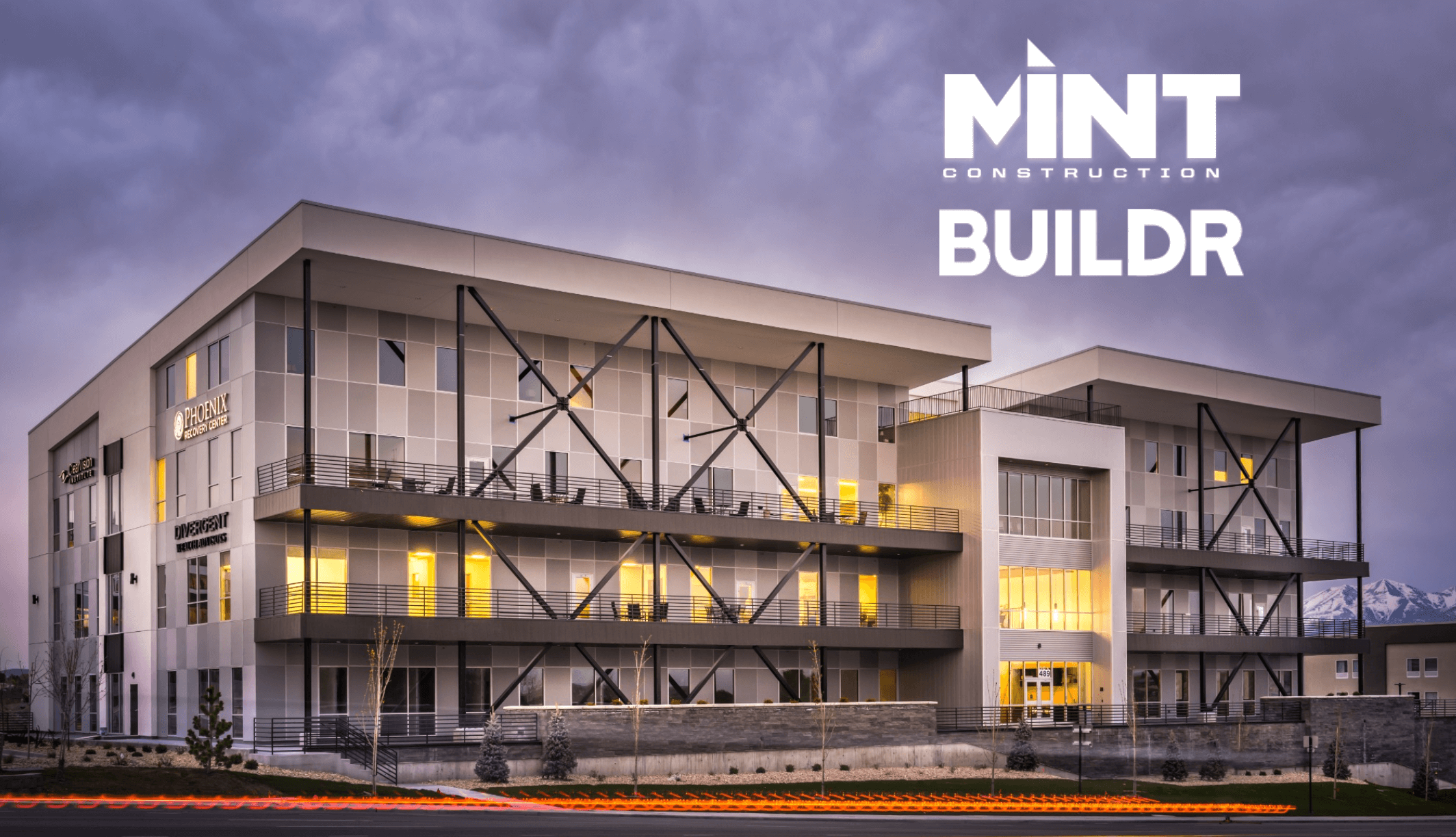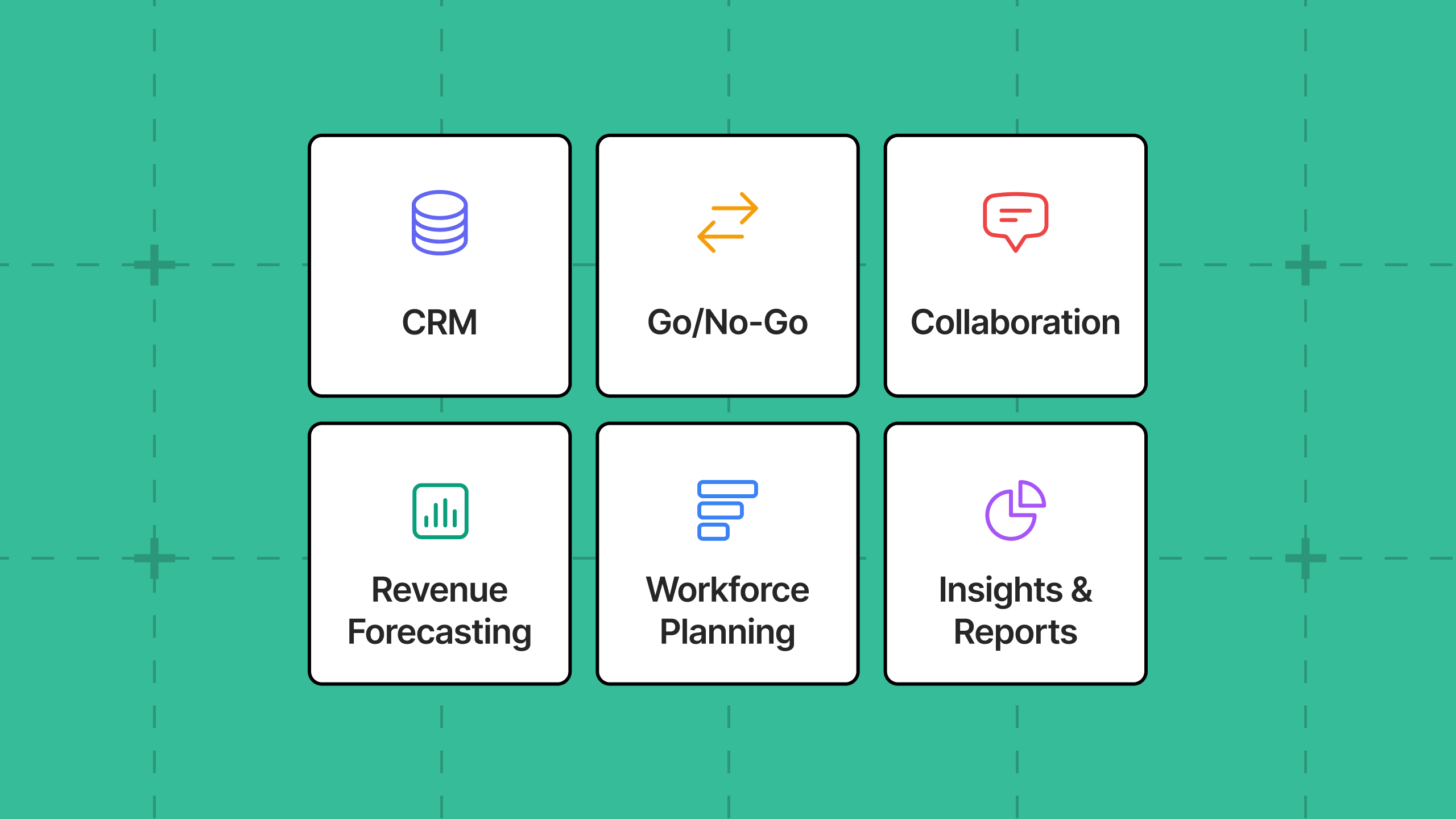/
Mint Construction doubles its construction volume by empowering its people with the right tools

Mint Construction doubles its construction volume by empowering its people with the right tools
The Utah-based general contractor adopts Buildr CRM, making strides in collaboration, workforce planning, and client management
December 21, 2022
11 min read
Customer Story

Michael Sullivan
Senior Growth Marketer

Mint Construction is a General Contractor and Construction Manager for commercial construction based out of Sandy, Utah that specializes in medical, professional office, tenant improvements, senior living, multi-family, industrial, and hospitality projects.
Founded just 6 years ago, Mint continues to carve out its footprint in the Utah building market with the agility and flexibility that usually comes with an eager team wanting to make a name for itself. Limited only by the quality of the systems they set to achieve their lofty year-over-year growth goals, the team at Mint Construction moves upward and onward—all in the face of a looming recession, pricier post-pandemic inputs, and ballooning interest rates.
Brandon Weaver is the Business Development Manager at Mint. One of his many priorities is to optimize processes to give his company the best footing possible to hit its goals and be the best builder in its market.
Brandon sought to bolster collaboration between departments and unify Mint's data capturing. They needed a way to do the most with the team they had in place; too many processes were time-consuming, unscalable, and siloed. The way Mint teams collaborated felt clunky as answers to questions were too scattered across the myriad of tools they’d been using to capture data—from Excel to notebooks. They needed a new way of doing things, and ideally this new system would also gel with what the company refers to as "the Mint Experience."
What makes the Mint Experience unique
Back when Mint started, Brandon and his team set out to decide what made Mint different from its competitors. They didn’t have any faster or clever way to do construction, they didn’t have any special relationships with mills, and none of their subcontractors were under exclusive contracts—their trade partners worked with everyone else.
Where Mint could stand out is what Brandon described as “the Mint Experience.” Whenever a job’s completed, they give the client a specially minted coin which represents the unique and personable process they undertook. Greater than 80% of Mint’s work is with repeat customers so a high-quality experience is paramount to the company's longevity.
And that Mint Experience is internal as it is external—Brandon understands the value in treating his own team with the same level of respect that every GC is expected to convey to their clients. He believes that when employees are happy and secure, that positive energy will inevitably trickle its way back to the customer.
When it comes to optimizing business processes, Brandon and his team are most eager to adopt ones that provide the same level of benefit internally as externally.
Why spreadsheets were falling short and the areas that the right CRM would be of critical help
Like most companies in their growing pains stage, Mint juggled many Excel sheets to keep track of their most important data. It was clear that this was a temporary measure. Brandon knew that Mint Construction would need a company-wide client relationship management (CRM) system, not only to manage its increasing client count, but to improve the internal business development processes and eliminate as many assumptions as possible.
“Communication across multiple departments gets messy,” said Brandon. “Assumptions are made and therefore mistakes can be made. We knew we needed a CRM to help with that.”
Communication was becoming more difficult as the company grew, not only between people but between the different softwares, spreadsheets, and different forms of manual data-capturing. Even though Mint Construction was still "small," they were suffering from an alienation that stemmed from the inability to capture and express data across the entire company.
“We were using so many different tools to capture data and getting handicapped by our ability to share information across all of them,” explained Brandon. “I’d ask an estimator a question and they needed to check Microsoft Teams, Excel, OneNote, and their notebook for the full answer. We were just big enough that we couldn’t expect everyone to know the answer to every question on the spot—we desperately needed some repeatable, accountable process to allow the right decisions to be made. I don’t think we would’ve grown had we not found Buildr.”

A bird's eye business overview and a system to prioritize the right jobs at the right time
Brandon’s team spent the better part of 3 years scouring for a CRM that would be suitable for Mint, but none were ever a perfect match.
Mint ultimately went with Buildr, citing that the construction-specific nature of the platform made it immediately useful without the headaches that can arise from complicated onboarding for other CRMs—namely, CRMs that don’t prioritize ease-of-use, collaboration, and aren’t specifically built for general contractors.
“The two biggest things were the construction-specific element and the level of customization we could do on our own. [All the other CRMs on the market that we looked at] would spend so much time eventually getting there... but it would cost us time and money to get it to where it was finally functional for us. Buildr was ready to go out-of-the-box.”
Buildr’s customer success team worked with Mint to quickly upload the GC’s multiple years’ worth of customer data into the cloud. For Mint, a new CRM in place meant:
No more reliance on data-bloated spreadsheets,
No more reliance on an inaccessible system of data and project management that would only hinder the company’s ability to continue scaling,
No more locally stored data that could be lost to error or employee turnover, and
Departments could work together seamlessly.
Brandon emphasized that the importance of Buildr was two-fold—on the micro and macro levels:
A) On the micro-level, Buildr provided the ability for an estimator to manage their business in an accountable way with a running list of tasks per job.
B) On the macro-level, Buildr allowed everyone to see the overall book of business that every team member manages, then prioritize their energy accordingly.
“While we had a similar number of jobs the year prior,” said Brandon, “a lot of this year’s jobs were smaller with lots of tasks that we’d get caught up in. Whatever new task came through the door, we’d hone in on it and spend our time and energy on it.
“We didn’t have one place where we could look at the totality of our business, where projects were in each phase, and then prioritize our efforts on the projects that mattered most. Without Buildr, we were lost in notebooks and spreadsheets. We were all scattered, putting out the newest fires without knowing the big picture. Buildr finally let us be one collaborative unit, all on the same page. It hands us the tools to focus on the right jobs at the right time so we could take the same number of people and double our revenue.”
Mint finds added value in Buildr’s forecasting and workforce planning
With Buildr’s forecasting and workforce planning, Mint’s operations and business development teams could not only strategically set lineups for projects on the fly, but also forecast project staffs on potential jobs. “In our weekly meetings, we can pull up Buildr and say ‘okay, we need to hire two more supers by March.’ We can see in the Gantt view, ‘This job is coming up and this person would be a better fit.’ Buildr equips us to plan for the future.”
In his research, no other construction CRM on the market included the ability to manage workforce, and for Brandon it made the decision to partner with Buildr even more of a no-brainer.
“When a job ends, it makes superintendents and project managers nervous because their value has suddenly come to a halt,” he said. “They’re concerned about not knowing what their next job is and where they’re going next. I don’t want our people to ever feel like that. So a nice thing about the workforce planning tool is that our supers and PM’s can all jump in and say in our weekly meetings, ‘hey, in four months this smaller 20-unit home project is coming online. I think it’s a good project for you, do you want to work together for the next 12 months and be ready for that?’ It just makes life so much clearer and less fraught when it’s all in front of everyone.”
Brandon’s heard from his superintendents how empowering it is to have such a visible system for workforce planning in place. With the out-of-the-box customization within workforce planning, Mint was finally able to, as Brandon described, “create different views that are important to us and filter between them, all without having to pay a developer and wait weeks [for them] to put that together. It’s a massive benefit.”
Brandon and his team suggested the utilization feature within workforce planning to the team at Buildr. With utilization, it’d be immediately clear how thin Mint was stretching its crews on projects and adjust accordingly. Buildr developed the utilization feature with Mint's vital input and it’s now an integral piece of the workforce tool.
“The workforce tool very quickly allows me to see on a very high level what our overall utilization rate is for each of our employees,” said Brandon. “I can see ‘okay, it’s not great at these times in the year’ so I know when I need to have jobs ready to go.”
Construction-specific CRM is meant to be empowering for GCs
Good client management is proactive, not reactive
One of the primary benefits of any CRM is the capturing of historical data in client interactions. Client data provides insights into what’s worked as well as a roadmap for continued success with present and future clients. Claiming you have the best customer service isn't a stretch when an organization utilizes its CRM well.
At Mint Construction, and most general contractors, many different people within the organization have interactions with the customer. Within Buildr, every interaction gets captured and logged.
“One of our rules is that whenever you finish a task [within Buildr], you schedule another one. There always needs to be a planned future engagement with the client,” explained Brandon. “So I can see if someone says ‘hey, I’ll be ready in 2 months,’ then I’ll make a task to email them in seven weeks. Our customer engagement is way better now because it’s all planned. It’s proactive instead of reactive.”
The future of Mint Construction and Buildr
Mint Construction more than doubled their revenue from 2021 with no CRM to 2022 with Buildr as their CRM, all with the same number of estimators. Brandon credits Buildr for helping to supply that system to achieve that initially lofty goal.
“We doubled our annual construction volume because Buildr helped our pre-con team act as a singular unit and stay locked in to our goals. We were able to focus our energy on the most profitable jobs. From the collaboration element alone, the investment is minimal because it gives my team the tools to feel empowered instead of frustrated.”
Brandon remarked that team meetings are much more productive because there’s less playing catch-up—everyone already knows every status of every job. “Buildr’s accountability is a big piece because task management is visible across our whole company. No doing things again and again, no following up again and again. A construction-specific CRM like this is long overdue. For any GC, it will absolutely matter to your business to have one.”
When speaking about Buildr’s employee empowerment, Brandon said, “Look, we don’t have superstars. Our people are just good. And we’re doing this kind of revenue with the same program. I’d argue that if you’re a GC you probably have good people in your organization that could do superstar-level work if they were only given the right tools to do more.”
With their teams finally given the tools to act as one cohesive unit, the sky's the limit for Mint Construction. For them, having their teams satisfied and empowered will benefit clients present and future as a nice side-effect. The fully realized "Mint Experience," both internal and external, is no longer an ideal to promise and then shoot for—it's already here.
Stay in the loop
Seriously, you should sign up to be a construction insider. Everyone will be so jealous of you.